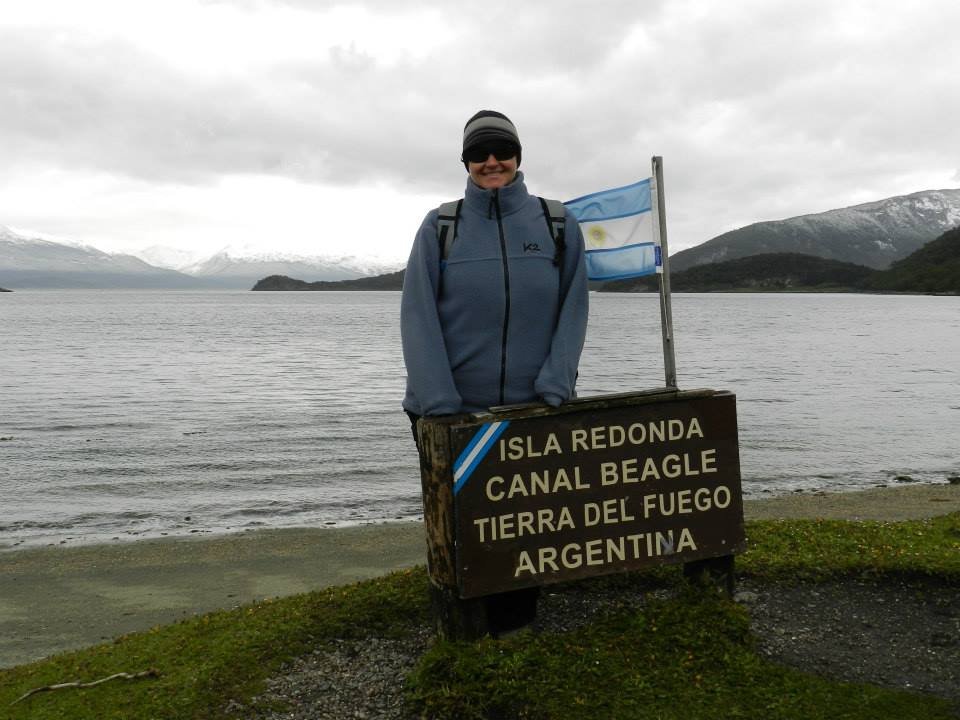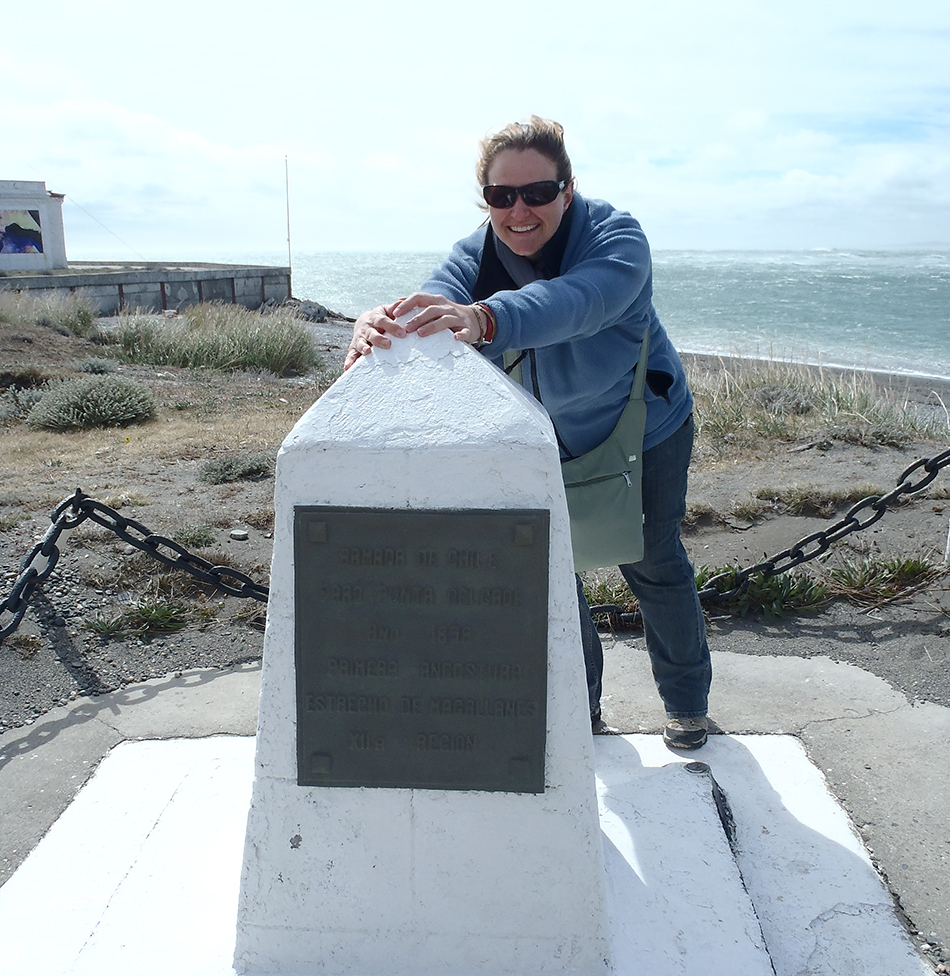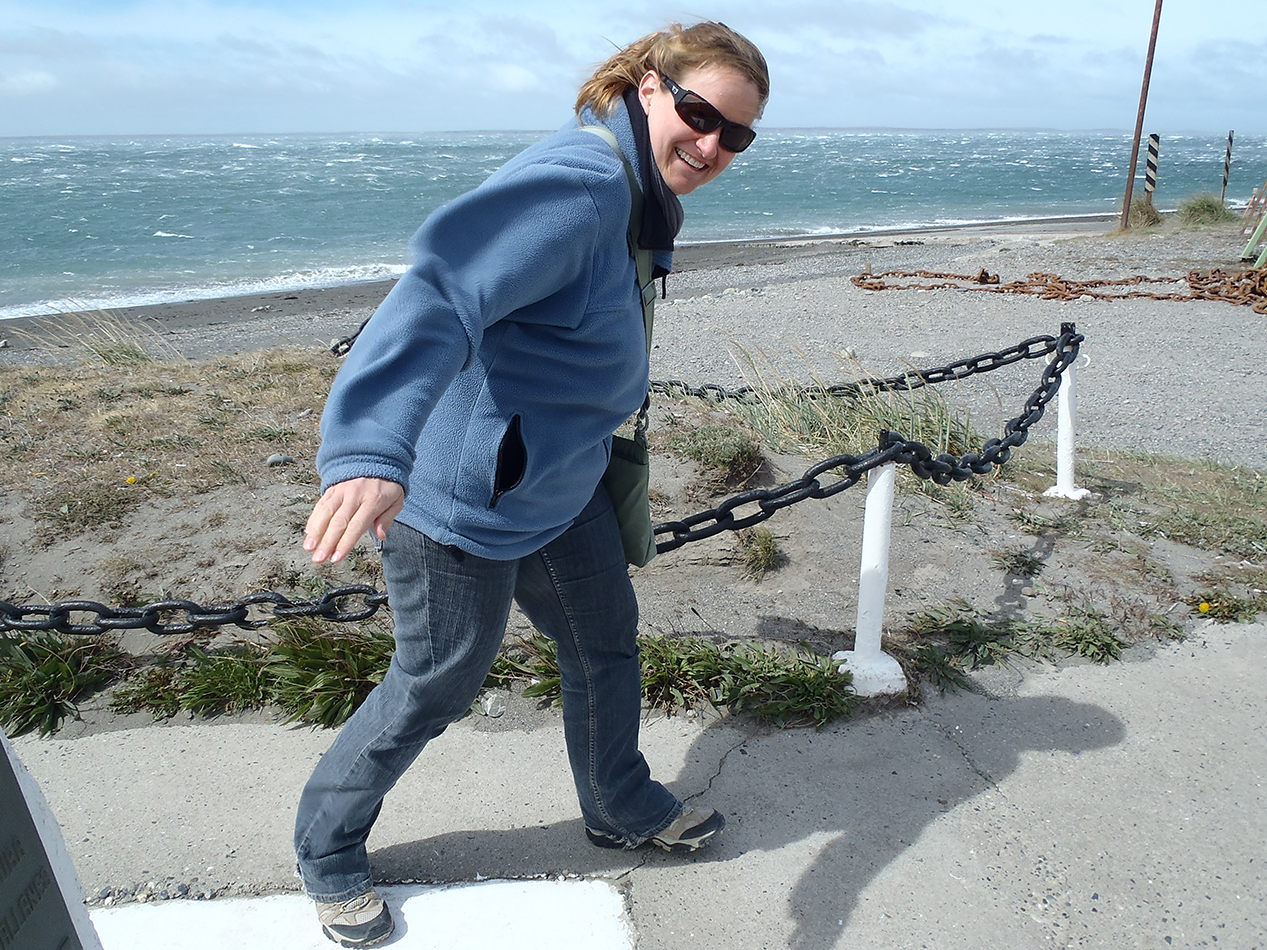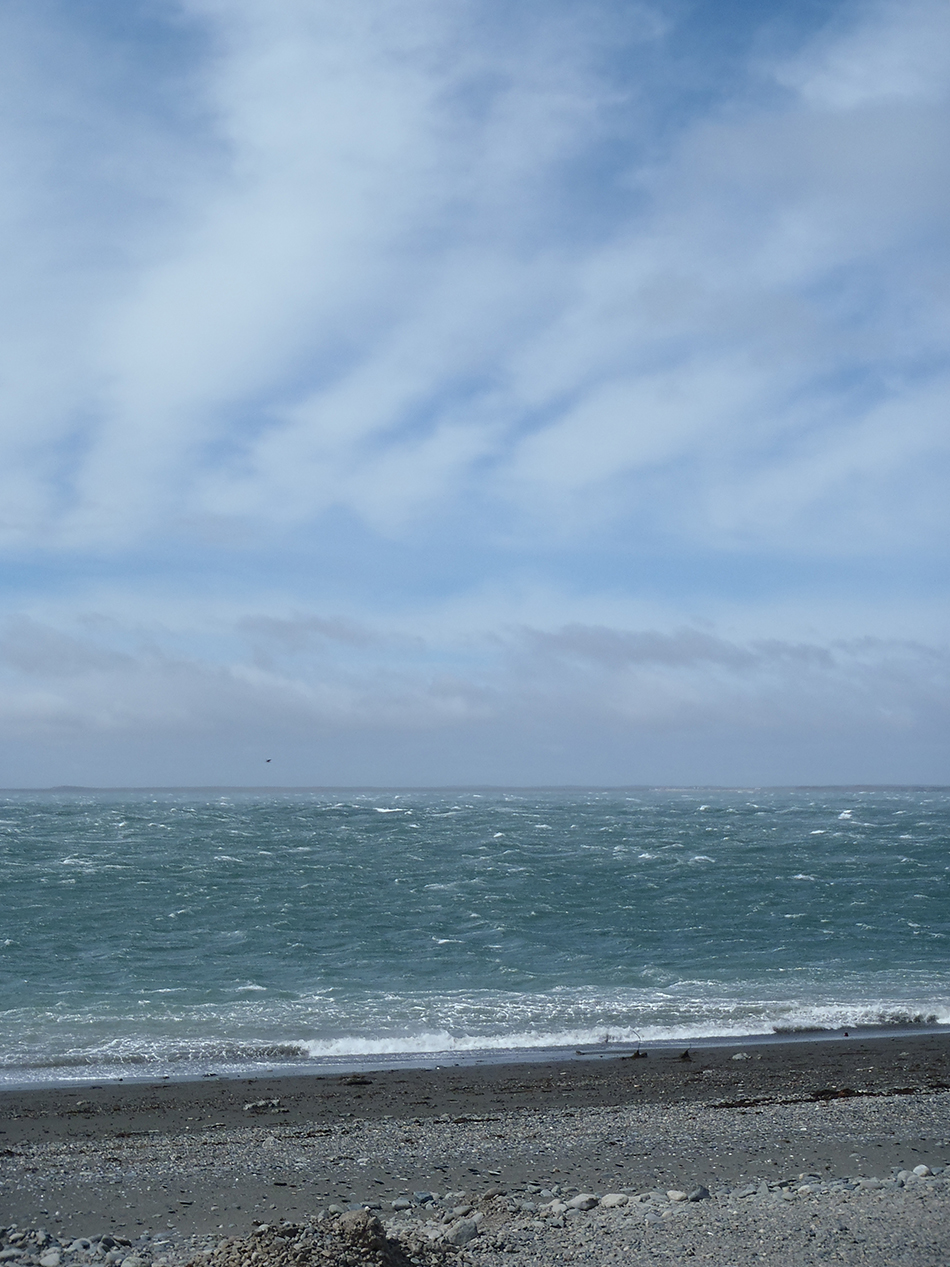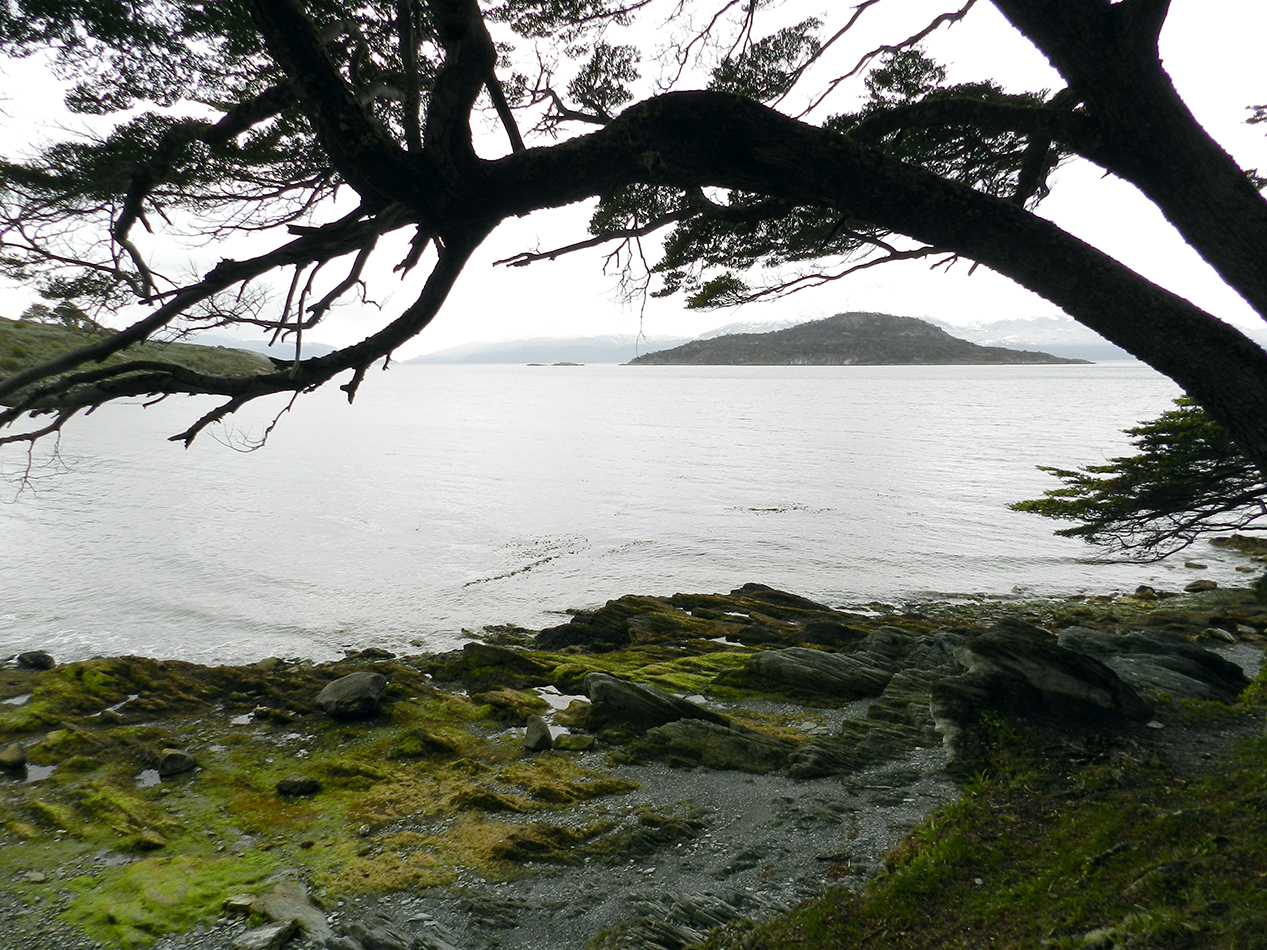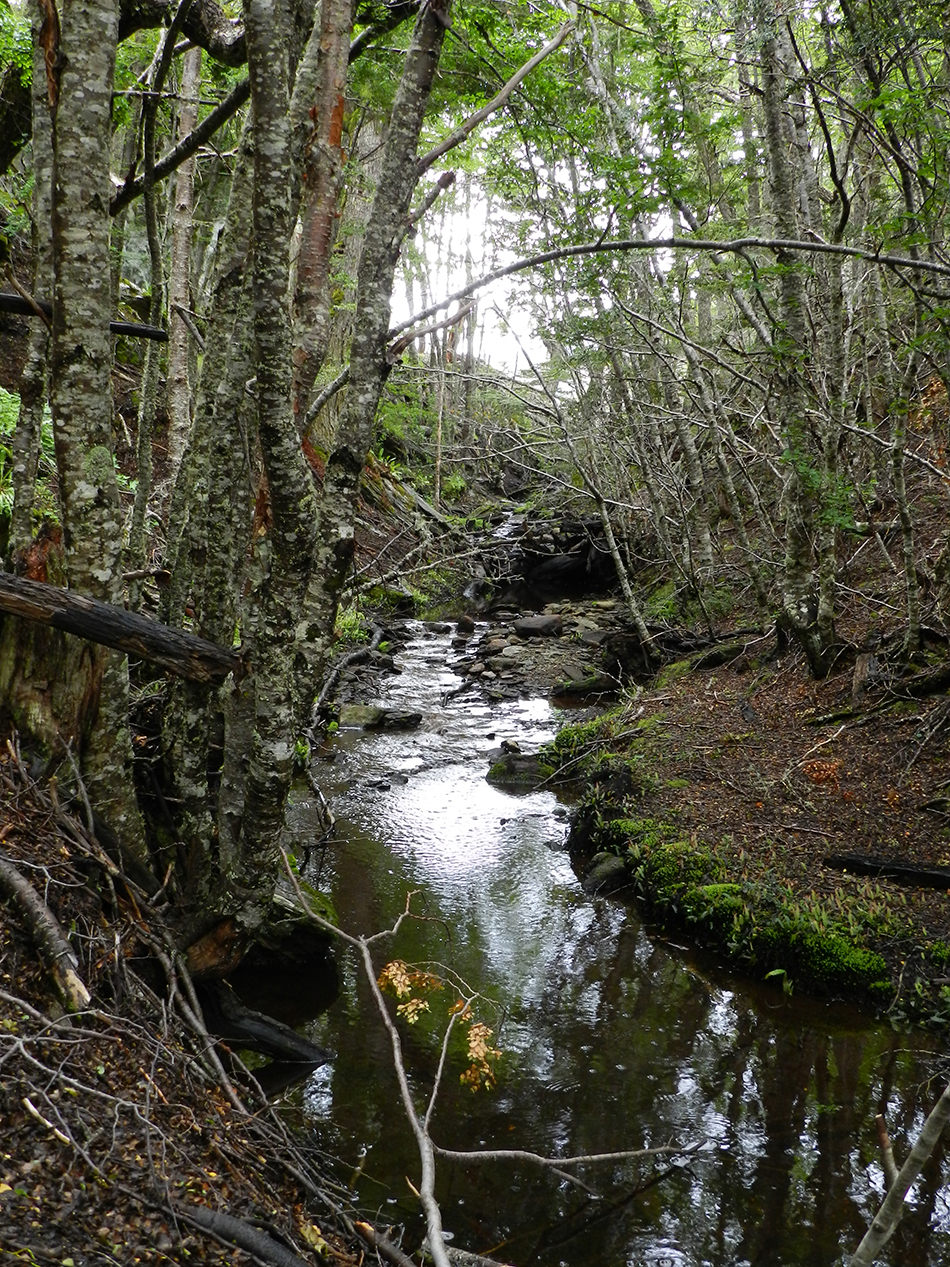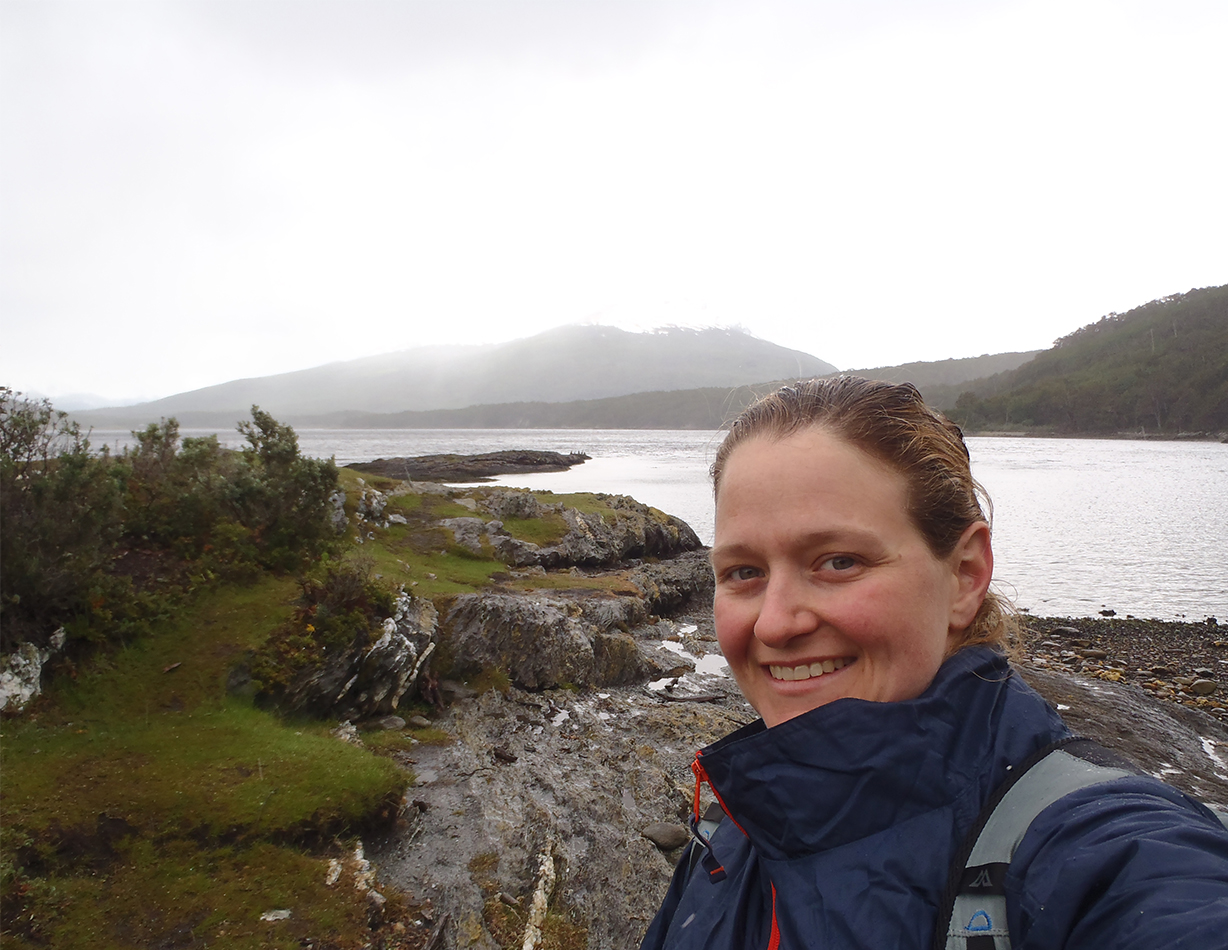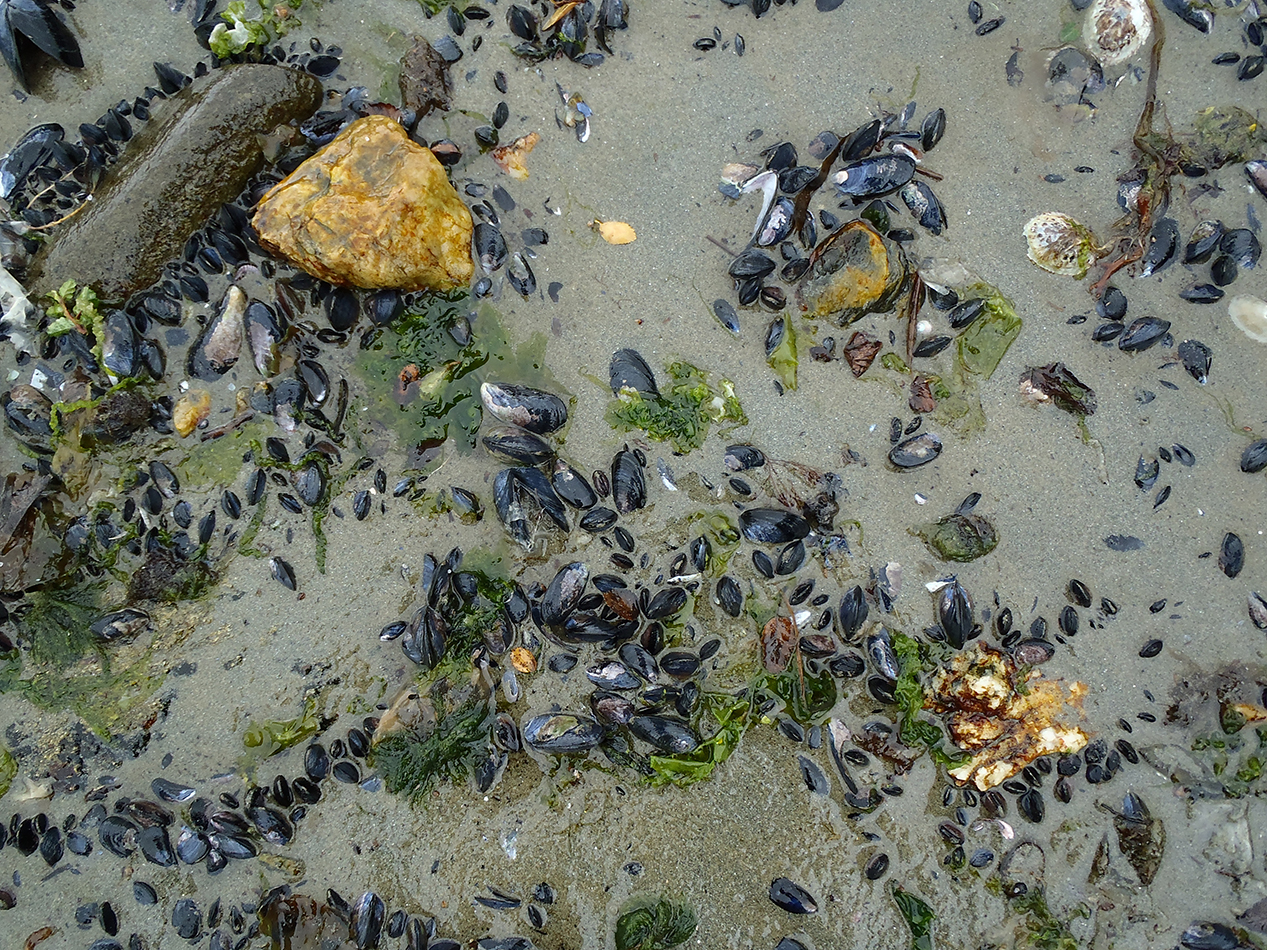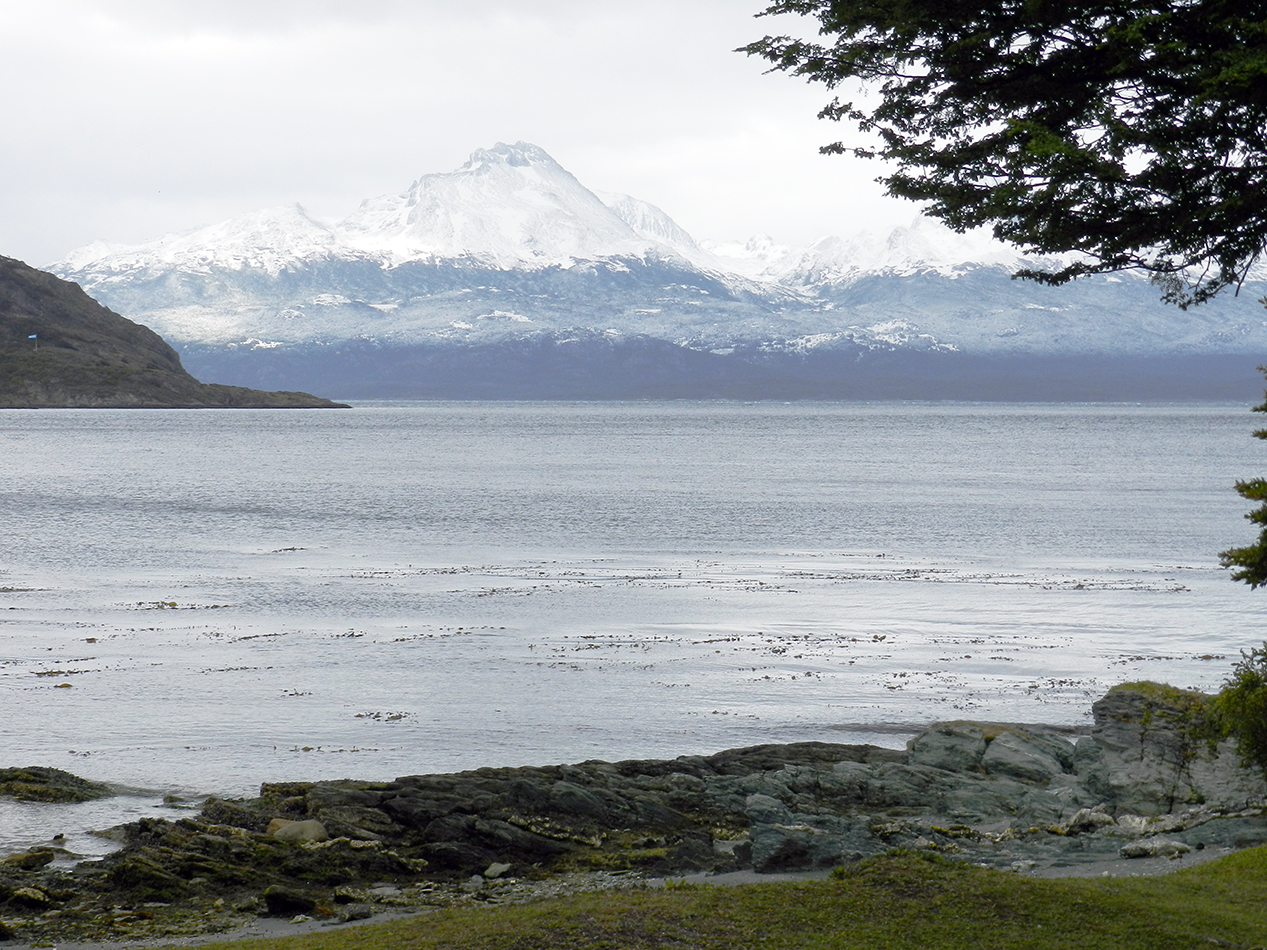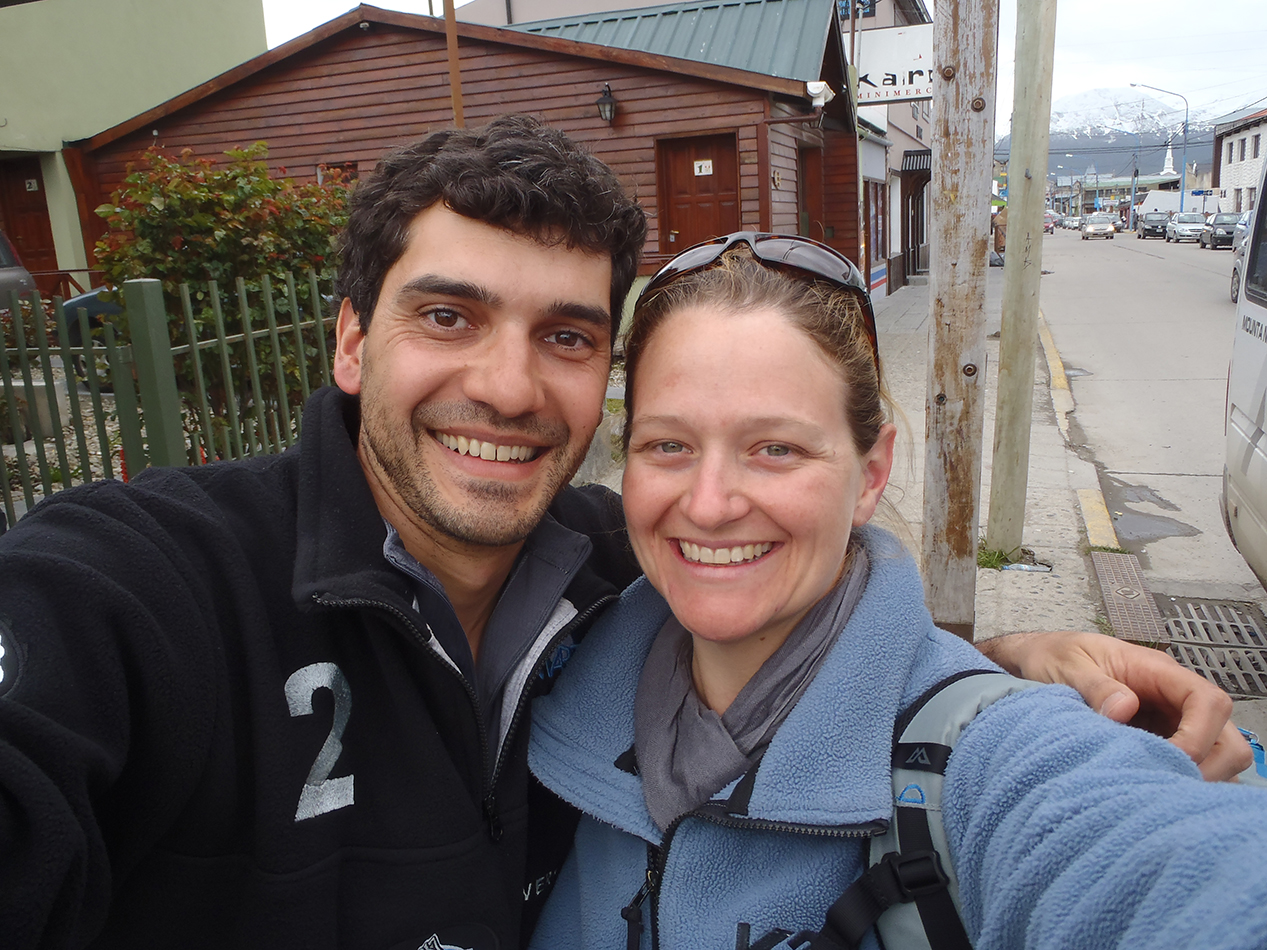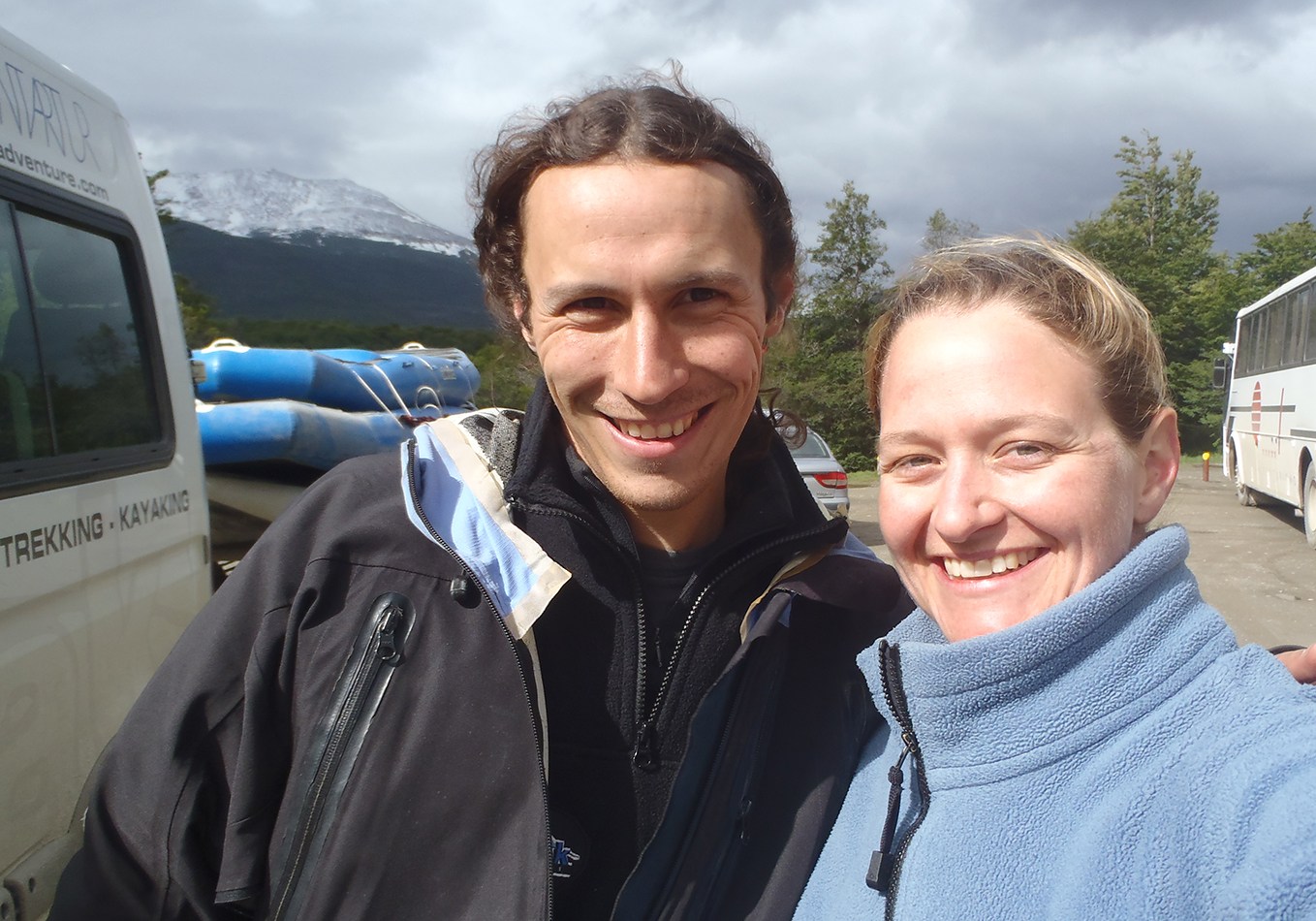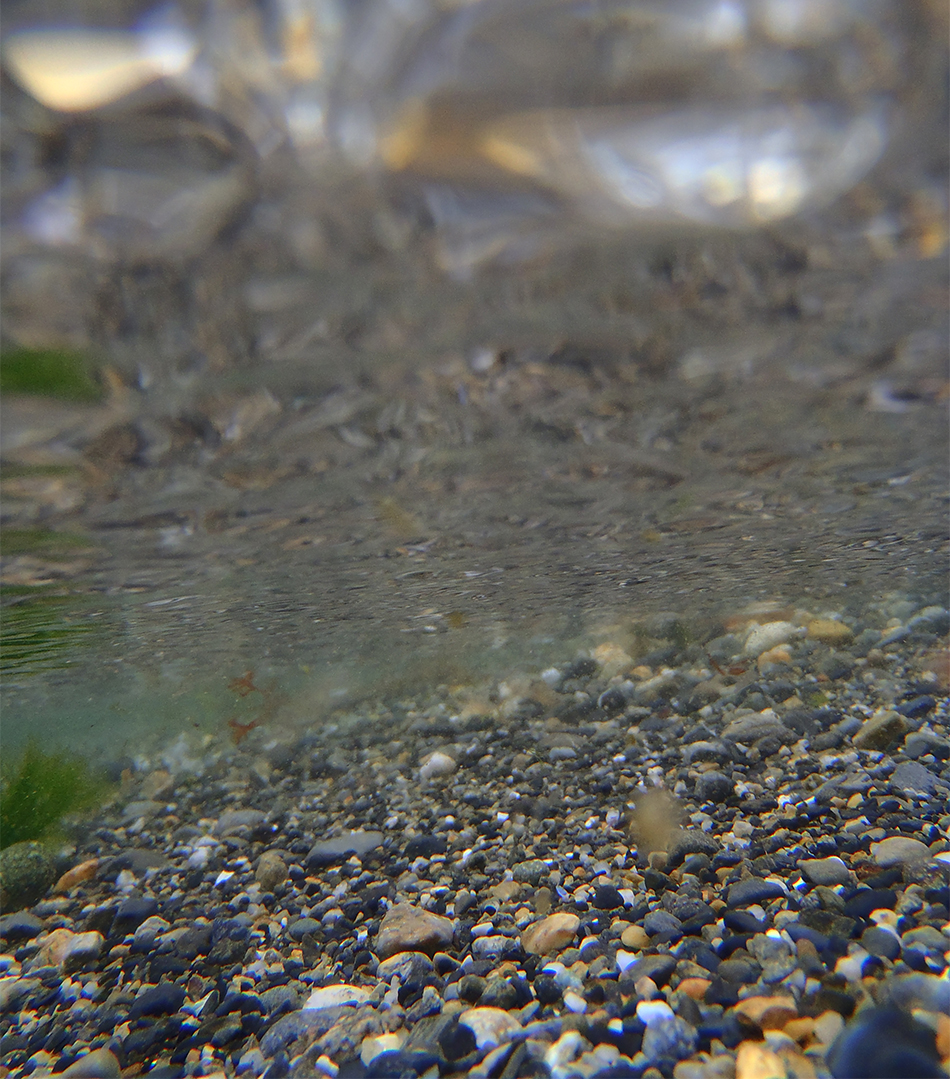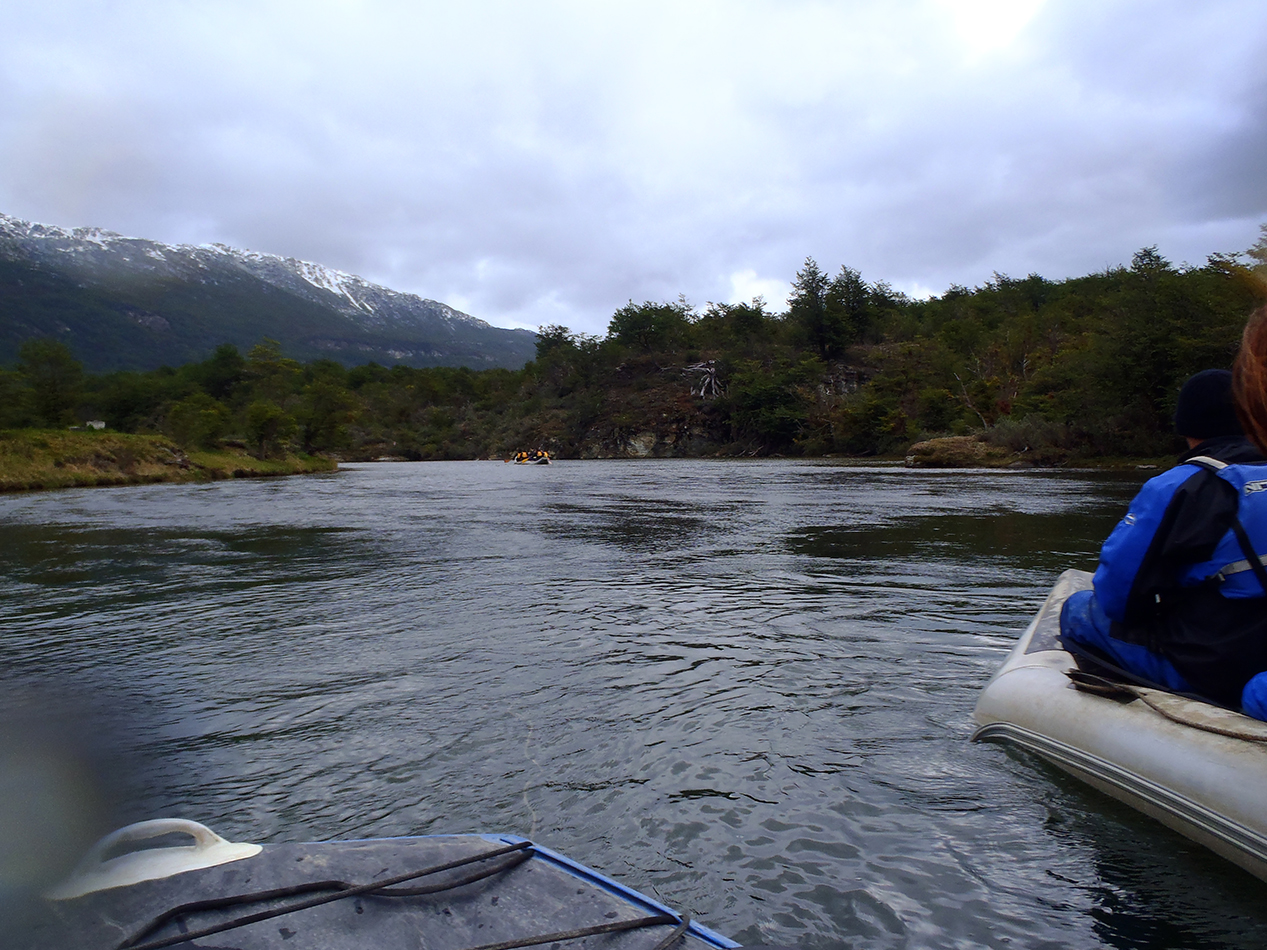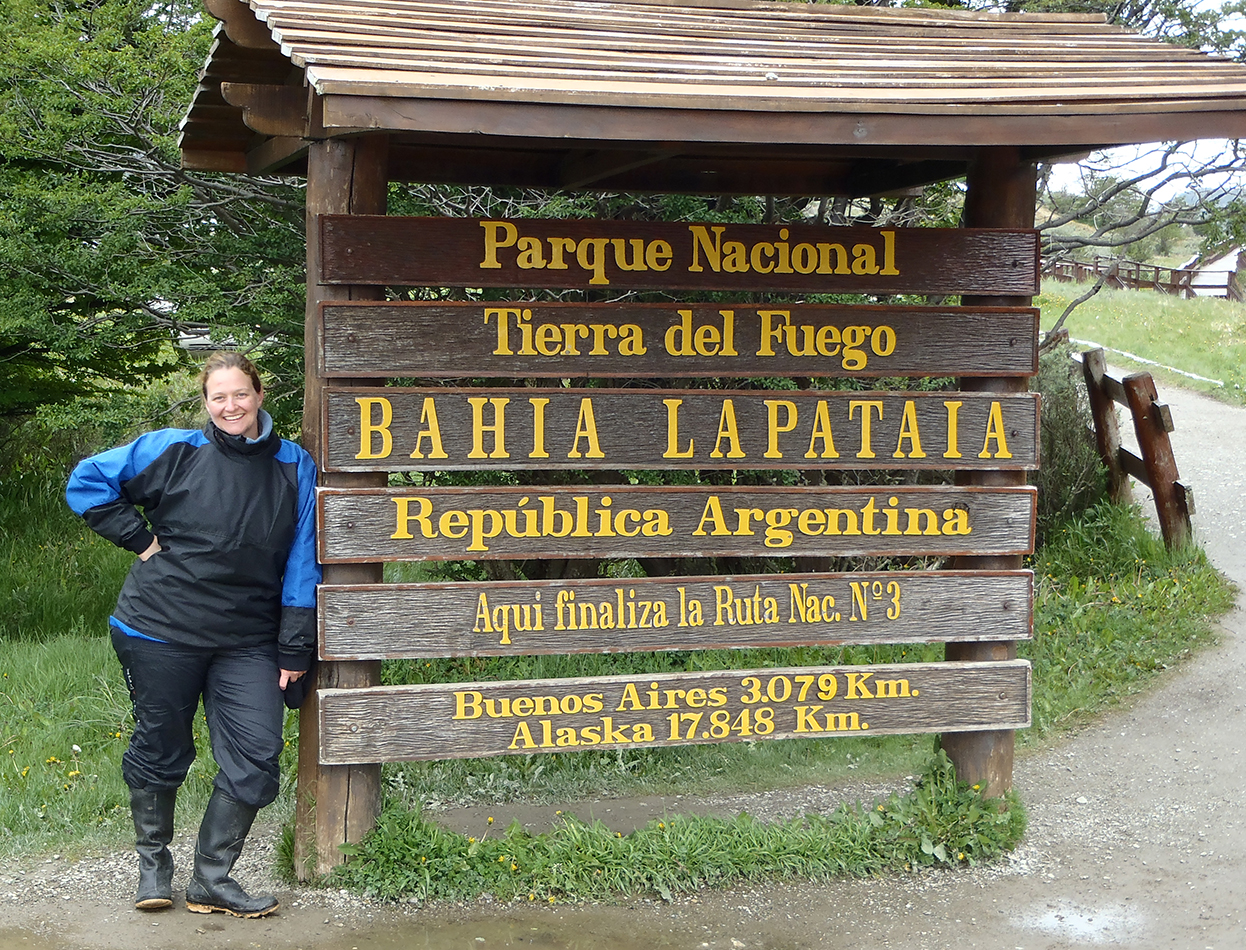I can remember learning how to say “Tierra del Fuego” when I had an assignment to research the Portuguese explorer, Ferdinand Magellan in primary school. Fuego means fire and the way it rolls off the tongue reminds me of the gentle fanning of flames you breathe into a new camp fire, coaxing it to life so you can toast marshmallows.
To finally make it to the “bottom of the world” and to a place that has held my imagination for so many years feels like glorious relief. Glorious to know I have set foot on this stunning island and played in her waters, relief after the ordeal to get here. In romantic hindsight perhaps it wasn’t meant to be easy to get here, it certainly wasn’t an easy ride for the old explorers battling the elements. Due to an 8-hour delay waiting for the ferry to cross the Straight of Magellan it turned an average of 11-hour trip into 19 hours and gave us a 4.15am arrival into Ushuaia. The weather gods thought we needed an extra degree of difficulty to make sure we really remember our time here so they put on 3 degree C, rain, slicing winds and NO taxis waiting for us at the bus stop. Several blocks uphill and my blessed hostel with 24-hour reception had a warm bed and hot shower waiting for me and I had 3 hours sleep while the wind and rain hurtled their collective furies at the windows.
Gabriel the guide and el Capitan, Dario from Nunatak were in charge for my first excursion, trekking in the national park and paddling rafts on the Beagle Channel.
We started outside the independent and still functional Fin del Mundo correo – post office from the end of the world. An energetic hike following the coast of the national park with views over the water towards the border with Chile took us through forests of native lenga trees and past sights of archeological significance – giant mounds of mussel shells, overgrown with grass and moss show the habits of the original indigenous people – the Yámana – they ate great piles of locally harvested mussels and were nomadic, always looking for a new mussel colony to feed their family. They also didn’t believe in wearing clothes that could get wet and make you colder, so they got around nude. I was wearing 6 layers plus gloves and beanie and hearing that made me colder… It’s freezing here even in Spring!
We stopped by a few beaches to see remnants of a saw mill that existed before it was designated a national park, upland geese pairs and a flock of swallows dipping and diving at great speed. As it had been raining, the trail was a slippery adrenalin ride over exposed tree roots, squelching through thick, dark mud, straddling puddles, hopping between rocks over streams and trying to keep up with Gabriel. I suppose when you do the trek everyday of the tourist season, you can set a cracking pace.
The Bulgarian family with disinterested teenage daughters and chain-smoking father (yes, even though we were in a national park where it’s prohibido fumar, he found time to light up constantly…love it when you’re out to enjoy the fresh air and sucking up lung-fulls through exertion….nice. Real nice.) lagged behind enough to snag Gabriel’s progress, giving us some time to view the cormorants diving for fish, seagulls swooning over the waves and shake the snowflakes from our hair. We enjoyed a couple of smattering snow flurries, even with the forest canopy sheltering us, the tiny ice fell with enough confidence and volume it flecked our faces and drummed a ticking cadence on our jackets.
Three hours later we emerged beside the road and saw the degradation a beaver dam can do to a habitat where beavers aren’t native. Scores of dead trees and a changed landscape which in these conditions can take an age to recover. They’re targets for rangers who are trying to fight a losing battle.
Lunch in Lago Roca camping ground of chicken soup, meat, cheese, bread, vino tinto, fruit and chocolate was delicioso inside a cosy dome marquee. Bellies full we then struggled into wet weather pants, jackets and life vests for the paddling trip – I had to borrow Gabriel’s pants – I told him I wouldn’t tell his wife he’d had a strange woman in his pants that day 😉
Sebastian and Dario were our guides in three boats – a Dutch couple, Mario the German doctor and myself got to take the third raft without a guide and did a great job going in a straight line for short bursts many times. We didn’t perish so that’s a win in our books 🙂
The water is crystal clear and quite shallow for most of the way, we didn’t see any fish however we did see tremendously long tendrils of kelp with their veiny leaves bobbing on the surface. It can grow to about 25+ metres long. We portaged around a shallow bend and continued on towards the Channel, the wind and current doing a feeble job to push us back up the stream. Out in the open we got to view a few flying steamer ducks before rounding a bend towards shore and chancing upon a large group of flightless steamer ducks. As the name suggests, the flightless flapped their tiny wings without gaining any lift, the steamer part of the name is due to the fact that this action makes them look like paddle steamers, tearing along the top of the water, their wings rolling over and over like a paddle and generating a lot of noise and churned up water. It was a sight to behold!
Back on land we had successfully crossed the Beagle Channel and Lapataia Bay by raft, not bad huh? We posed next to the sign that designates the end of Ruta Nacional #3 that starts in Buenos Aires over 3000kms north. For Argentina, it’s the end of the world. A curious red fox sauntered through the car park to show us that while this may feel like a remote and wild environment, people have been here for eras.
And after all those years since primary school, I was one of those people, smack bang in the middle of glorious Tierra del Fuego and I felt right on top, at the bottom of the world.
